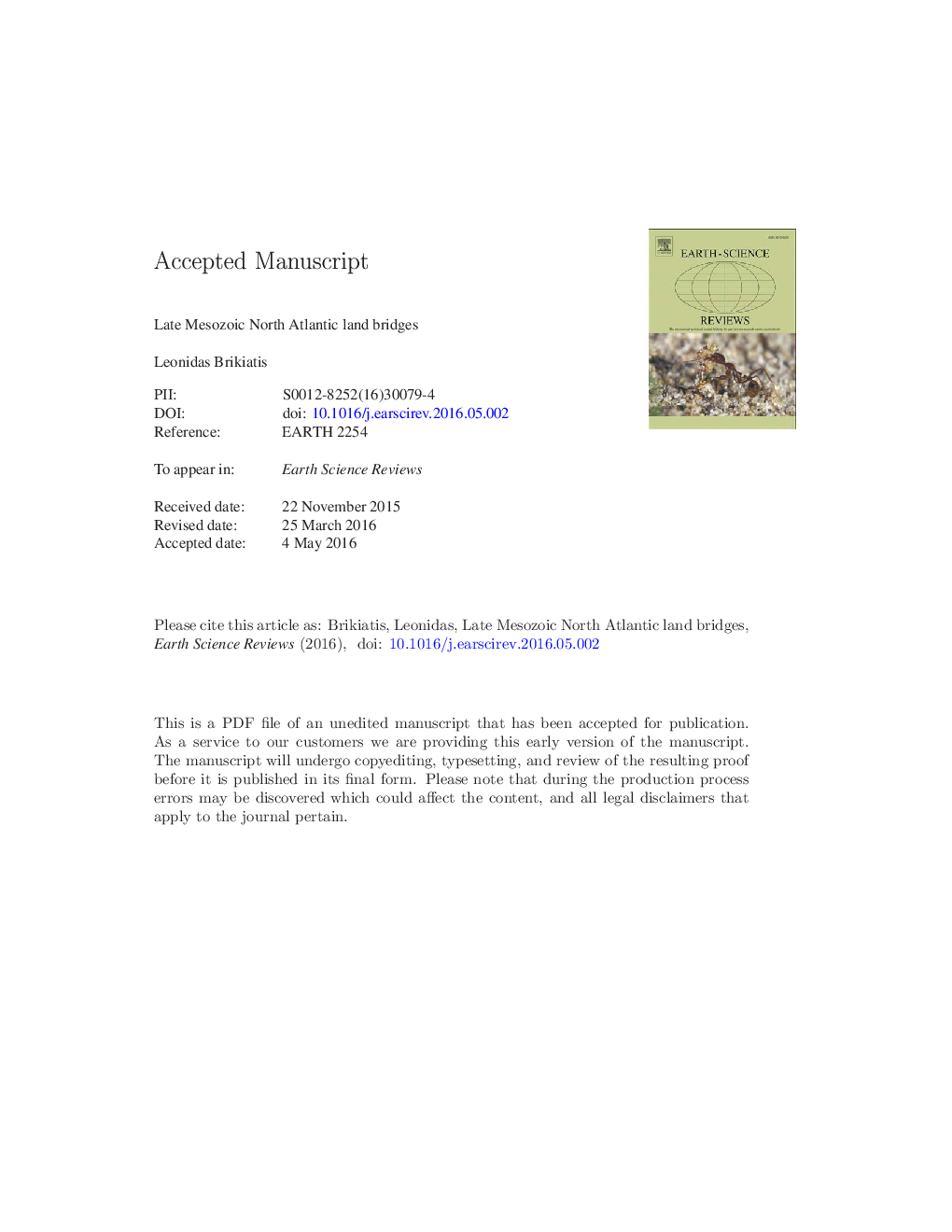| Article ID | Journal | Published Year | Pages | File Type |
|---|---|---|---|---|
| 6442838 | Earth-Science Reviews | 2016 | 44 Pages |
Abstract
Current palaeogeographical reconstructions suggest that since the onset of the Late Jurassic and during the whole Cretaceous Period, the landmasses of North America and West Eurasia have been separated by seaway(s) exposed on the North Atlantic rift system. Such a palaeogeographical setting should have limited the possibility of direct overland dispersals between the biotas of the two continents. Strong faunal affinities between the two sides of the North proto-Atlantic Ocean presuppose faunal exchanges between the landmasses, however, suggesting the existence of ephemeral land bridges around the Jurassic/Cretaceous boundary and the mid-Early Cretaceous. This study reviews the current faunal evidence and discusses palaeogeographical evidence that might better elucidate the existence of the postulated land bridges. Evaluation of the evidence leads to the conclusion that two land bridges were exposed: 1) between East North America and Iberia during the Late Kimmeridgian (~Â 154Â Ma) and 2) between North America and Fennoscandia, via the Barents Shelf, around the Hauterivian-Barremian boundary (~Â 131Â Ma). The former land bridge was terminated in the earliest Tithonian (~Â 151Â Ma), and the latter was terminated in the late Early Barremian (~Â 129Â Ma). Furthermore, the latter land bridge was contemporaneous with regressive stages in both the Mid-Polish Trough and the sea strait crossing the Russian Platform, allowing broad, direct terrestrial communication among North America, Europe, and Asia in the earliest Barremian.
Related Topics
Physical Sciences and Engineering
Earth and Planetary Sciences
Geology
Authors
Leonidas Brikiatis,
